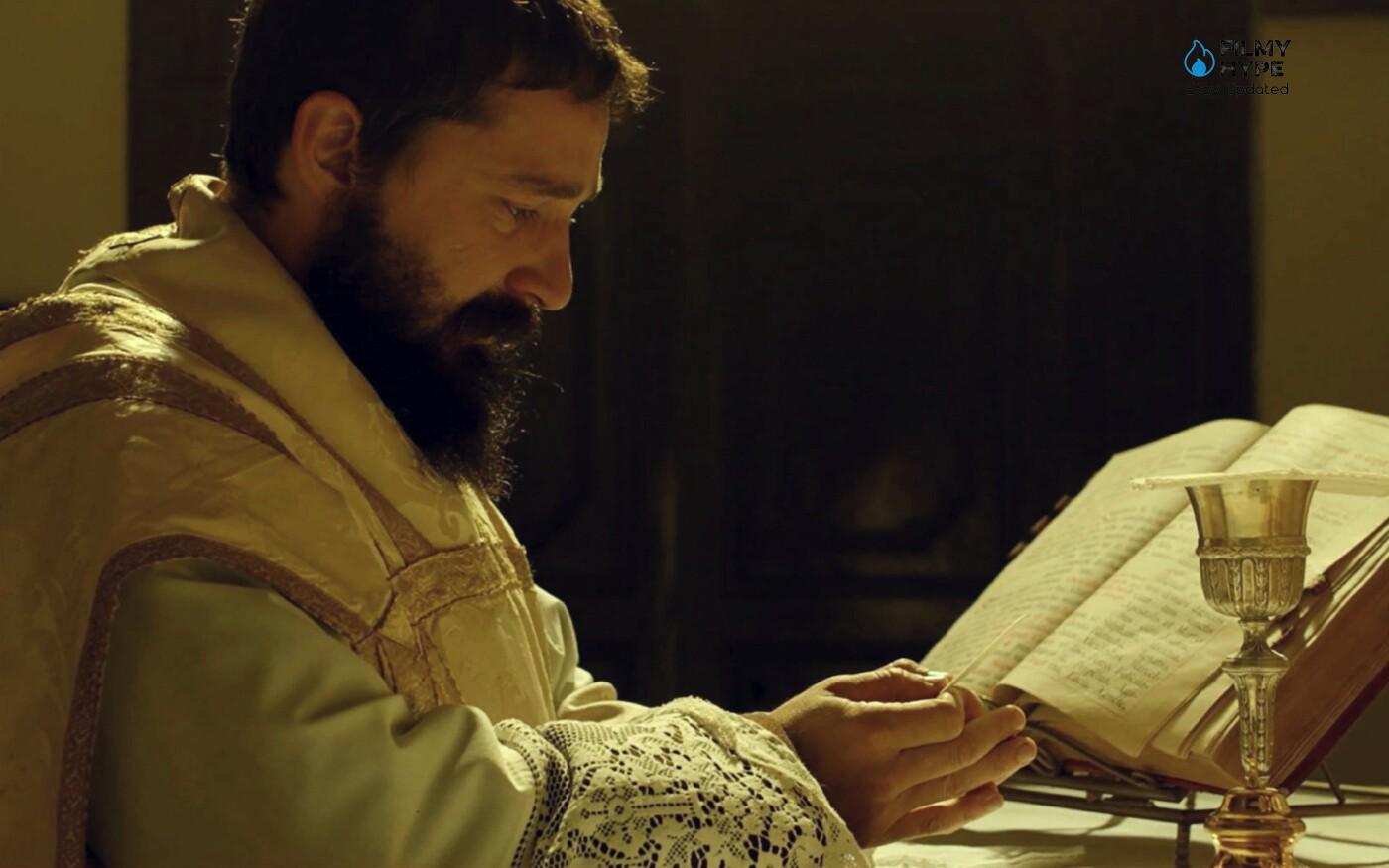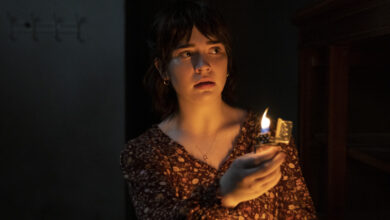Padre Pio Review: (Venice 79) A Film Biased Towards The Events Of The Inhabitants Of San Giovanni Rotondo
Stars: Shia LaBeouf, Marco Leonardi, Luca Lionello
Director: Anthony Sarracco
Filmyhype.com Ratings: 3/5 (three stars)
The highly anticipated film by Abel Ferrara, Padre Pio, on the saint of Pietrelcina, completely shot in Monte Sant’Angelo in Puglia, starring Shia LaBeaouf, was presented in competition at the nineteenth edition of the Venice Days authors. In the cast also Cristina Chiriac, Marco Leonardi, Asia Argento, Vincenzo Crea, Luca Lionello, Salvatore Ruocco, Brando Pacitto, Stella Mastrantonio, Martina Gatti and Roberta Mattei. A Maze Pictures, Interline a Film and Rimsky Productions production.

Padre Pio Review: The Story
It is the end of the First World War and the young Italian soldiers return to San Giovanni Rotondo, a small town of few “souls” over which the Church and the wealthy landowners exercise an iron dominion. Poverty, exploitation, and denied rights mark the life of the “least”. In this same period, Padre Pio also arrives in a remote Capuchin convent to begin his ministry. Soon in San Giovanni Rotondo, a tragic event will mark the beginning of a new period of violence and death for Italy and the world.
Padre Pio Review and Analysis
Padre Pio, starting from the cut of his protagonist, is positioned halfway between the story of the real alter ego (almost always personified by Dafoe) and that of a spiritual summa at the end of an inner journey that passes through a confrontation/clash with themselves (much closer, therefore, to the film with Ethan Hawke). The version of the friar brought to the screen is, as also the story agrees, that of a “saint in formation”, who decides to spend time alone in that convent because in it he has the opportunity to unleash a night war which he feels necessary to take a decisive step towards Christ. The transformation of his spirit, but also his body in a certain sense, however, passes through a reaction to what is happening in the world around him, becoming the medium of a message that God addresses to all creation.
If you are expecting the classic film about the life of one of the most revered saints you will be disappointed or, on the contrary, pleasantly surprised. It could not be otherwise for a divisive author like Abel Ferrara, now fascinated by our country and by the most charismatic figures who have marked his history, such as Pier Paolo Pasolini of whom in Pasolini of 2014 he told the last hours of his life before his tragic end. In Padre Pio focuses instead on the youth of the friar, before the stigmata and the popular fervor that was created around him. Pius is tormented by the disturbing visions of the devil who presents himself in different guises, he constantly prays to get closer to God, to Christ, to be worthy of their kingdom. In an incessant distressing atmosphere, accompanied by the evocative music of Joe Delia, Ferrara introduces us to the suffering of Pio, into his life devoted to sacrifice, obsessed with the fear of Hell, with sin.
But the center of the story in the Ferrara film is not the saint: Pius soon becomes a “collateral” figure to the story of the poor of San Giovanni Rotondo, families, women and men exploited by rich landowners, without protection, while some young members of the Socialist Party are trying to uplift the population, to push them to rebel for their rights and vote in their favor in the upcoming elections for real change. There will be victory but it will lead to the massacre of San Giovanni Rotondo in 1920 when the procession for the socialist electoral victory is repressed in blood by fascists and soldiers, allies of the landowners.
The fatigue of the poorest and most exploited, the strength of the young people who perpetuated change, the pride and courage to clash with power, with arrogance and wickedness up to the infamous epilogue are the protagonists of this film, events in parallel with Pius’s journey towards that martyrdom on earth which will then lead him to holiness. Padre Pio is a film “unbalanced” towards the events of the inhabitants of San Giovanni Rotondo compared to the path of the friar who then seems to indirectly acquire on his body and soul the weight of this massacre, of that bloodshed in a land forgotten by God but in which Padre Pio will build the Casa Sollievo Deaaa Sofferenza hospital, one of the most important and specialized in Italy. Not a hagiography aimed at leveraging popular veneration, therefore, but a film that searches in that poor and violent land and in that massacre the origins of the mysticism of Padre Pio who would “take on” the blood of his “brothers” and the suffering of others.
Abel Ferrara closely follows the young Pio through long and intense close-ups, those of the American actor Shia LaBeouf who proves to have deeply acquired the essence of the mystic of Pietrelcina. This is certainly thanks to the director’s study of the saint’s letters on which the screenplay written by Ferrara together with Maurizio Braucci is based, from which well-known aspects of the saint emerge, such as his strong and severe character, which is evident in the scene into which Asia Argento, in the role of a “tall man”, is violently scolded by Pio, deeply shocked by his confession.
From a formal point of view, the American author decides to tell a fictional story with a register as close as possible to the documentary one and in some ways punk rather than neorealist. The dop is a practically absent figure, intervened only in post-production in the person of Alessandro Abate (Martin Eden), but the result is more like fiction than real cinema, even the more artisan one that the Bronx filmmaker developed after the Roman period, especially in surreal moments. The music, on the other hand, is not effective, (well) edited once again by that Joe Delia who began to collaborate with Ferrara at the time of the bad lieutenant. Unfortunately, acting in English by our fellow villagers is not always effective.
Padre Pio Review: The Last Words
Perhaps a film on Padre Pio would have deserved more space dedicated to the saint but Abel Ferrara’s reading of his youth, a sort of “prequel” to the most famous part of his life, in parallel to a tragic and shameful event that shows how the overwhelming of power over the poor has no time and to pay always the last, it is very interesting. It is no coincidence that the film is dedicated both to the victims of the massacre and to the Ukrainian people oppressed by an unjust war, as are all conflicts. Padre Pio is in full a film by Abel Ferrara, therefore extreme, provocative, aligned, self-reported, but also passionate and alive. Without compromise, even at the cost of touching, at times, inadmissibility by the majority of the public. His cinema, however, remains an art, that, with all its rusts and rigidities, still can enrich.







